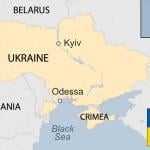It hurts to be made to feel like you don’t belong. Being an outsider terrified us as children, and, even as adults, we avoid it at all costs. We want to be “on the inside,” “in style,” “included.”
Being outside is a frightening experience, which is why this reading from the book of Hebrews is so challenging:
For the bodies of those animals whose blood is brought into the sanctuary by the high priest as a sacrifice for sin are burned outside the camp. Therefore Jesus also suffered outside the city gate in order to sanctify the people by his own blood. Let us then go to him outside the camp and bear the abuse he endured.
Hebrews 13:11-13
The writer observed that Jesus was crucified outside the camp. In those days, when animals were sacrificed at the temple, the carcass was burned on the garbage heap outside the city walls. It was where lepers were forced to stay. It is where the poor and infirm still reside in many places. We look at those cities and shake our heads.
How long has it been since you drove through the poor section of your city. (In Atlanta, it is the South side.) Have you ever wondered why the city’s garbage dump is there, or why the prison is located there? Almost all toxic waste sites and urban industrial pollution zones are located in minority communities.
We never talk about environmental racism because most white people never see it and people of color have come to assume it is inevitable.
Fifty years later, Dr. King and his “I Have a Dream” speech are universally celebrated, but, in many ways, that is a mere accommodation. It distracts us from the reality that African-Americans are 79 percent more likely than whites to live in neighborhoods where industrial pollution is suspected of causing the greatest health dangers.
(www.dosomething.org/tipsandtools/11-facts-about-environmental-racism#)
In Jesus’ day the place of burning trash and toxic waste was also where they executed the worst kinds of criminals.
There is an old hymn we sometimes sing on Good Friday that says, “There is a green hill far away beyond the city wall, where the dear Lord was crucified who died to save us all.”
The hill we sentimentally call Calvary was not a beautiful, soft, grassy knoll. It was a garbage heap; a place of death and decay; a place where the poor scavenged for food, a place of rejects, failures, and the discarded. It was a place for outsiders.
Outside was where proper society decided Jesus belonged.
By Michael Piazza
Co-Executive Director
The Center for Progressive Renewal







